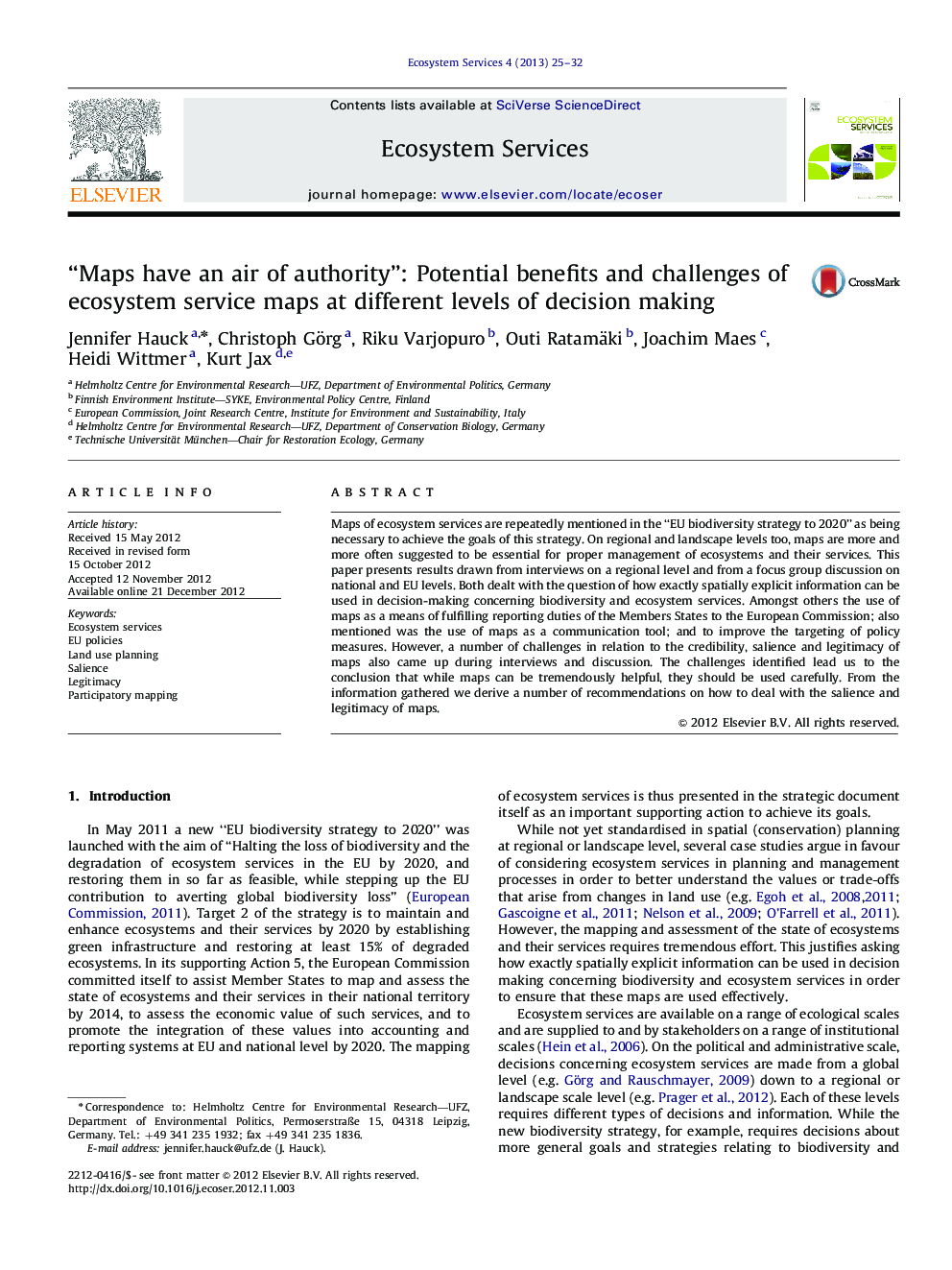| کد مقاله | کد نشریه | سال انتشار | مقاله انگلیسی | نسخه تمام متن |
|---|---|---|---|---|
| 108120 | 161854 | 2013 | 8 صفحه PDF | دانلود رایگان |
Maps of ecosystem services are repeatedly mentioned in the “EU biodiversity strategy to 2020” as being necessary to achieve the goals of this strategy. On regional and landscape levels too, maps are more and more often suggested to be essential for proper management of ecosystems and their services. This paper presents results drawn from interviews on a regional level and from a focus group discussion on national and EU levels. Both dealt with the question of how exactly spatially explicit information can be used in decision-making concerning biodiversity and ecosystem services. Amongst others the use of maps as a means of fulfilling reporting duties of the Members States to the European Commission; also mentioned was the use of maps as a communication tool; and to improve the targeting of policy measures. However, a number of challenges in relation to the credibility, salience and legitimacy of maps also came up during interviews and discussion. The challenges identified lead us to the conclusion that while maps can be tremendously helpful, they should be used carefully. From the information gathered we derive a number of recommendations on how to deal with the salience and legitimacy of maps.
► Broad spectrum for application of maps for reporting, communicating, policy design.
► Problems regarding credibility, salience, and legitimacy of ecosystem services maps.
► Maps are powerful and should be used carefully.
► Lessons learned from participatory mapping approaches.
Journal: Ecosystem Services - Volume 4, June 2013, Pages 25–32
